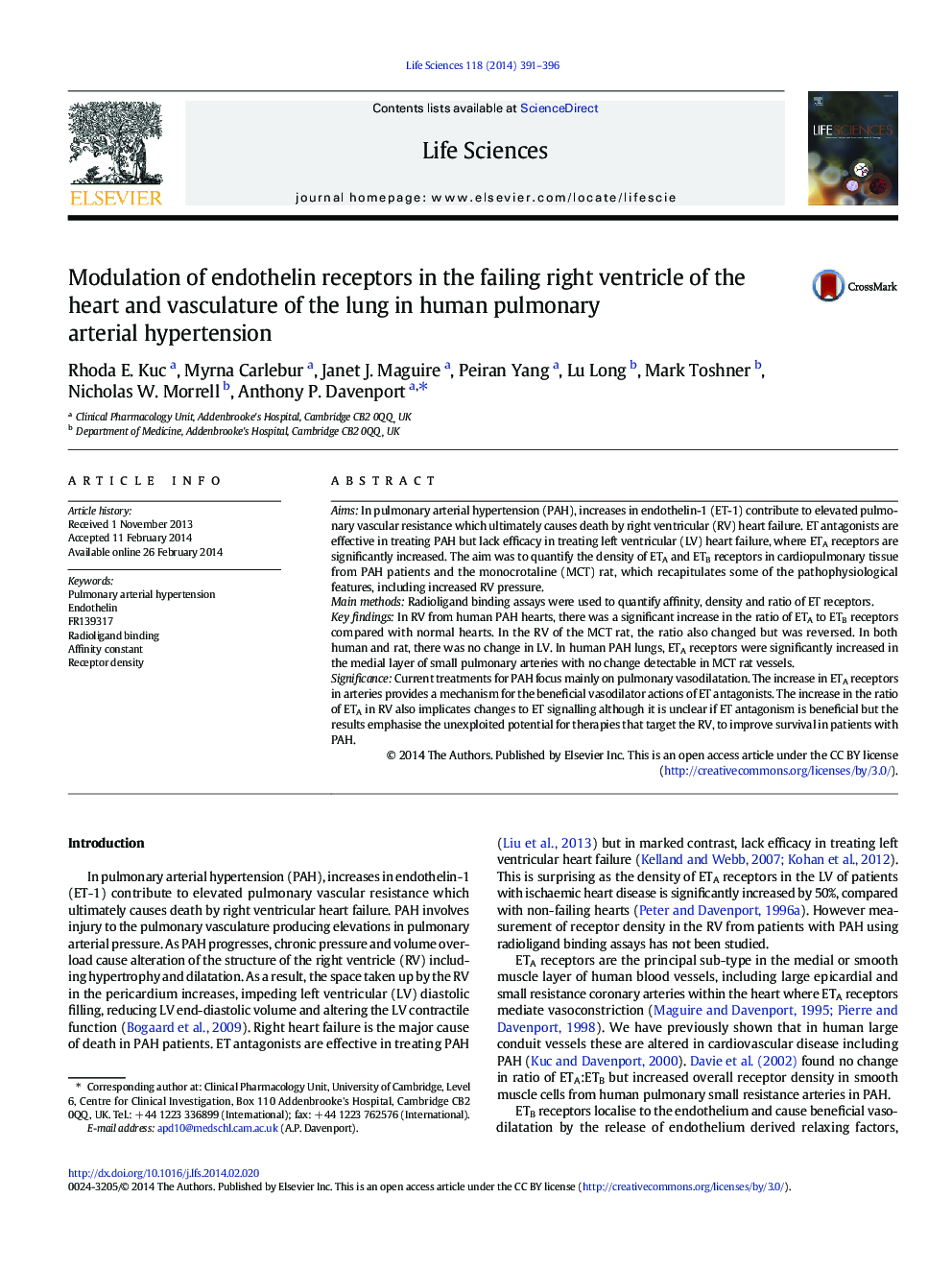| Article ID | Journal | Published Year | Pages | File Type |
|---|---|---|---|---|
| 5841949 | Life Sciences | 2014 | 6 Pages |
AimsIn pulmonary arterial hypertension (PAH), increases in endothelin-1 (ET-1) contribute to elevated pulmonary vascular resistance which ultimately causes death by right ventricular (RV) heart failure. ET antagonists are effective in treating PAH but lack efficacy in treating left ventricular (LV) heart failure, where ETA receptors are significantly increased. The aim was to quantify the density of ETA and ETB receptors in cardiopulmonary tissue from PAH patients and the monocrotaline (MCT) rat, which recapitulates some of the pathophysiological features, including increased RV pressure.Main methodsRadioligand binding assays were used to quantify affinity, density and ratio of ET receptors.Key findingsIn RV from human PAH hearts, there was a significant increase in the ratio of ETA to ETB receptors compared with normal hearts. In the RV of the MCT rat, the ratio also changed but was reversed. In both human and rat, there was no change in LV. In human PAH lungs, ETA receptors were significantly increased in the medial layer of small pulmonary arteries with no change detectable in MCT rat vessels.SignificanceCurrent treatments for PAH focus mainly on pulmonary vasodilatation. The increase in ETA receptors in arteries provides a mechanism for the beneficial vasodilator actions of ET antagonists. The increase in the ratio of ETA in RV also implicates changes to ET signalling although it is unclear if ET antagonism is beneficial but the results emphasise the unexploited potential for therapies that target the RV, to improve survival in patients with PAH.
Graphical abstractDownload high-res image (74KB)Download full-size image
